Hollywood’s forgotten superhero: why didn’t The Rocketeer take off?
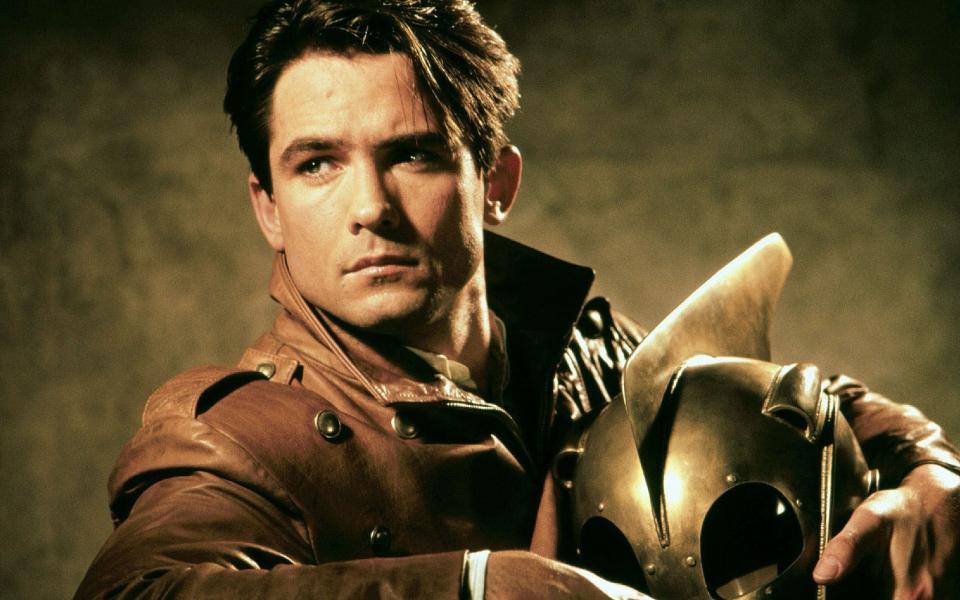
In 2021, it’s almost inconceivable that a Hollywood studio would turn its nose up at an untapped comic book property. But back in 1986, Dave Stevens’s idea to turn his popular cartoon character The Rocketeer into a big-screen superhero was sent flying from almost every pitch meeting he took. As Stevens recalls: “In those days, no [one] was interested at all in an expensive comic book movie.”
The Joe Johnston-directed Rocketeer is now recognisable as a classic origin story: an average joe discovers his powers, saves a dame, and beats the baddies. In this case, it’s cocky stunt pilot Cliff Secord (Billy Campbell), who finds a top secret rocket pack and battles Hollywood star/Nazi spy Neville Sinclair (Timothy Dalton) in Los Angeles in 1938.
For screenwriter Danny Bilson, who co-wrote the script with Paul De Meo, it was never a superhero story – it was more Indiana Jones. “It was always Raiders [of the Lost Ark],” Bilson tells me. “Raiders is what made it possible for us to go out and pitch The Rocketeer.” But unlike Dr Jones, the new film – which opened on June 21, 1991 – failed to crack the box office. Action figures and sequel plans were scrapped. The Rocketeer, still a hugely charismatic character 30 years on, might be the greatest movie hero to never get his due reward: a proper Hollywood franchise.
The connection between The Rocketeer and Indiana Jones goes deeper than a shared penchant for leather jackets and Nazi punch-ups. Just as George Lucas based Indy on Saturday matinee adventure serials, artist Dave Stevens created The Rocketeer in the image of Commando Cody, one of several heroes to don the low-budget “Rocket Man” clobber in Republic Pictures serials. (Cody’s amusingly naff rocket pack has handy switches for on/off, up/down, fast/slow and his helmet is more like an upturned bin.)
The original Rocketeer story was published in 1982 by Pacific Comics, a gorgeously crafted tribute to Stevens’ influences – the Thirties, pulp genre fiction, and wartime aviation. Arguably more style over substance, it’s packed with old school lingo and swoops between fiction, reality, and affectionate homage. Pulp adventurer Doc Savage is the inventor of the rocket pack and Cliff’s girlfriend – a nude model named Betty – is unmistakably the pin-up icon Bettie Page.
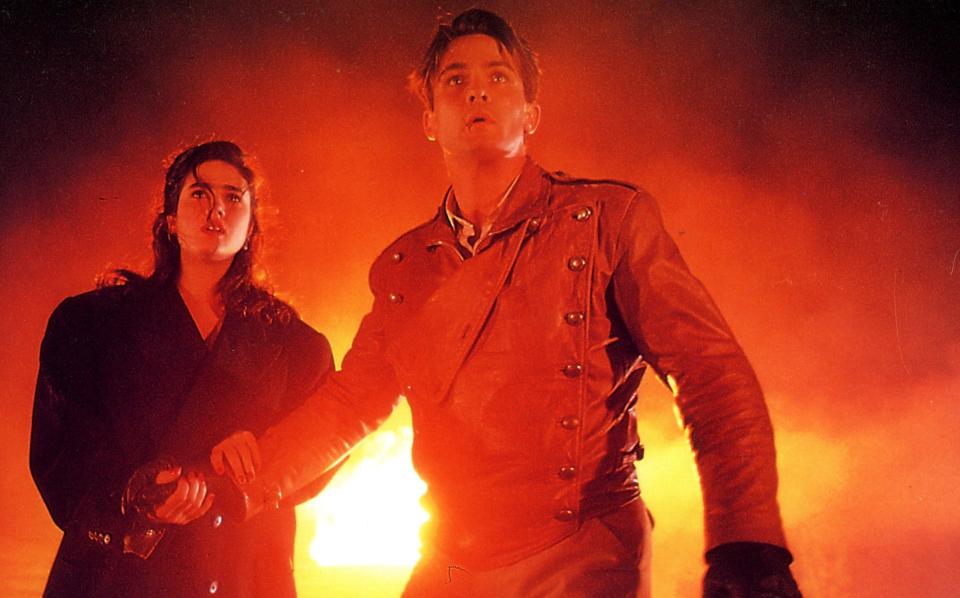
Stevens was a commercial artist by day (he also did storyboards for Michael Jackson’s Thriller and – coincidentally – Raiders of the Lost Ark) and was notoriously slow at producing The Rocketeer; partly due to publishers folding, partly due to the laborious work of making comics. “They’re nothing but back-breaking drudgery,” Stevens said. “And I have no patience for doing them.” He only ever published eight chapters, making up two complete stories, before his death in 2008.
The Rocketeer gained a word-of-mouth reputation. Just the tease of the character’s image within the pages of Pacific Comics – his retro aviation jacket and finned, shimmering helmet – created buzz. Among Rocketeer fans were Harlan Ellison, Time magazine, and, most significantly, the screenwriting duo of Bilson and De Meo, who were on a punishing contract to B-movie studio Empire Pictures at the time (they also wrote time travelling detective thriller Trancers and World War Two-alien mashup Zone Troopers).
“We had to write seven scripts in two years and we were always looking for ideas,” says Bilson. “We used to go to the Golden Apple comic book shop and dig through the bins. The mid-Eighties was the time of The Dark Knight Returns [Frank Miller’s revisionist, genre redefining Batman tale], American Flagg! [a futuristic political satire], and The Rocketeer. We loved it.” Approached by producer Lloyd Levin – following a recommendation from none other than James Cameron – Bilson and De Meo floated the idea of a Rocketeer movie.
The Rocketeer was destined to blast his way to the big screen. “I always viewed it in my mind’s eye as a film,” Stevens told Comic Book Artist Magazine. “I never really looked at it as just words and pictures on paper. I saw it and I heard it in my head. So for me, it was always a film.”
An earlier treatment was developed by director Steve Miner, but Stevens instantly connected with Bilson and De Meo. He offered them a free option on The Rocketeer.
Looking back on their first meeting, Bilson believes two things convinced Stevens that they were “kindred spirits”: firstly, their office was adorned with Zone Troopers artwork that was very Dave Stevens-esque (“1930s spaceships, very art deco”); secondly, their suggestion that the movie should include a fictionalised version of old timey actor Rondo Hatton – famous for his oversized facial features (a result of suffering from acromegaly) and for playing “the Creeper” in a number of Forties horror flicks – as a henchman. Stevens, it turned out, was a Hatton fan.
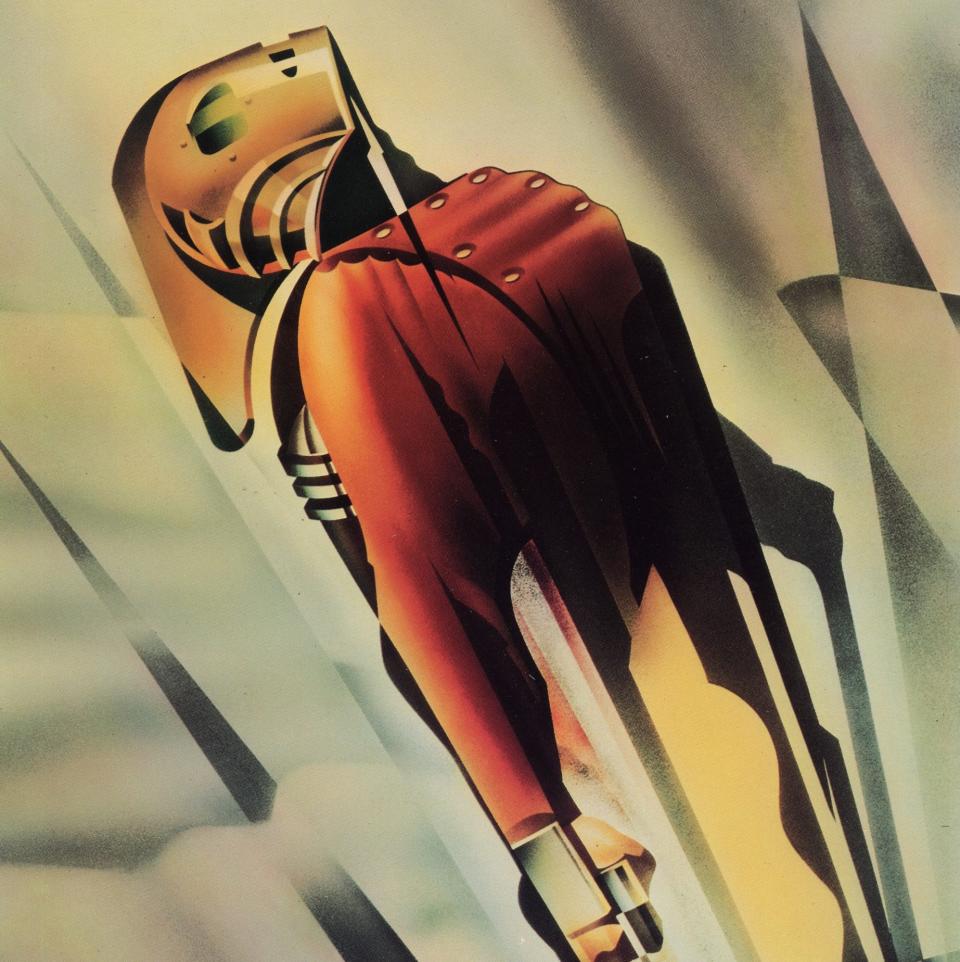
The trio bonded over a love of all things Thirties. Bilson and De Meo were big fans of that period of Hollywood (a writer on their staff once said, “You’re nostalgic for your parents’ childhood!”), while Stevens had a compendium of Los Angeles from that time, which he used for putting intricate period detail into his Rocketeer comics.
They wove more Thirties references into the screenplay. It was now entrepreneur-magnate Howard Hughes – played in the film by Terry O’Quinn – who invented the rocket pack. Villain Neville Sinclair was created as an Errol Flynn-like matinee star who hunts down the rocket pack for himself (well, for the Fuhrer, who – like his plan to nab the Ark of Covenant for evil-doing – wants to create an army of rocket men). “It was Basil Rathbone meets Errol Flynn,” says Bilson about Sinclair. The character was based on the unsubstantiated story that Errol Flynn was a secret Nazi. “It was just a rumour,” says Bilson. “We went with that.” Seven-foot basketball player Tiny Ron Taylor was cast as his Hatton-esque henchman, Lothar.
After being turned away from multiple studios, The Rocketeer finally landed at Disney. “The last studio on the list,” said Stevens. “They took one look at it, and said ‘toys!’” Originally it was intended for the more grown-up Touchstone Pictures banner, but was switched to a Disney film during production. Stevens described how company chairman Jeffrey Katzenberg announced “Disney needs a live-action hit!”
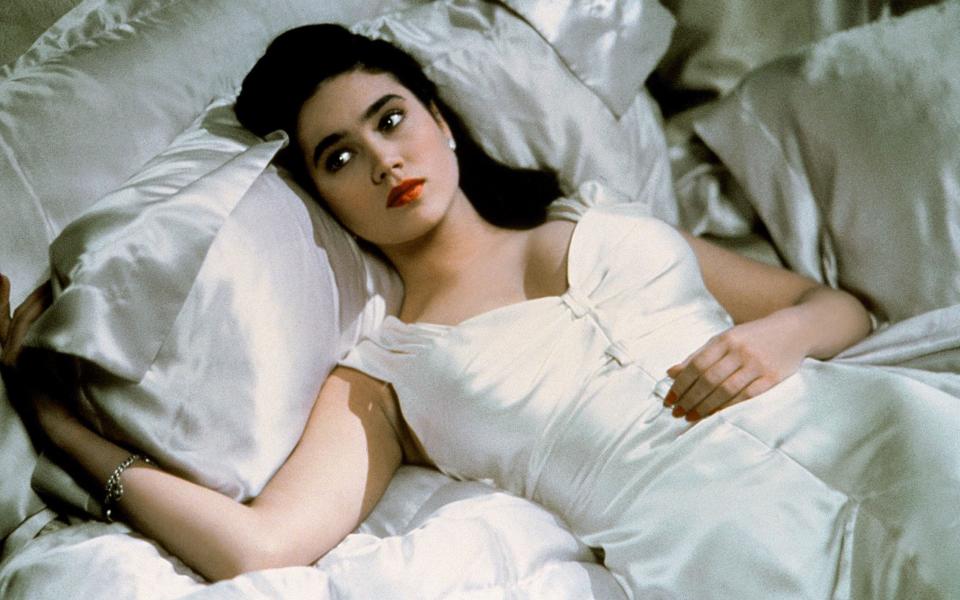
The story had to be toned down for a family audience. “Betty and anything else ‘adult’ went right out with the bathwater,” said Stevens. But Bilson knew from the outset that risqué elements wouldn’t fly at Disney. Betty became Jenny – played by Jennifer Connelly – a struggling Hollywood actress enraptured by the manipulative Neville Sinclair. (So charming is Dalton’s performance that while Sinclair is a-schmoozing Jenny he almost has you siding with the Nazis.)
Original director William Dear dropped out due to delays, leaving it open for Joe Johnston, then fresh off the giant-sized success of Honey, I Shrunk the Kids. Johnston – also a fan of the comic – had charged his agent with tracking down The Rocketeer rights, not knowing it was already in development. He had clashed with Disney during Honey, I Shrunk the Kids but pitched for the job anyway. Bilson recalls that Johnston protected their vision of the film: “Joe loved 1930s movies too,” says Bilson. “He became the fourth musketeer when he showed up.”
In the years since, the making of The Rocketeer has been slapped with the dreaded “development hell” label. Certainly, the script was years in gestation; Bilson and De Meo were both fired and rehired multiple times. Bilson doesn’t remember it being a fight, but recalls exhausting lists of notes from executives with each new draft. The challenge was to figure out which executives the notes had come from. If it was head honcho Jeff Katzenberg, they’d action them; if it was some junior from development, they’d find creative ways to ignore them.
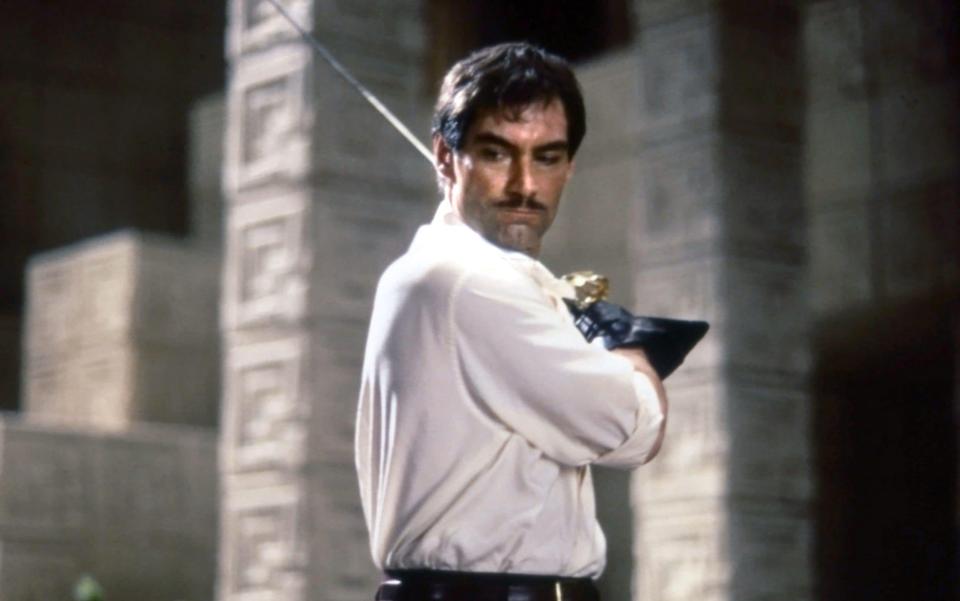
Johnston had his own battles. He fought to cast Billy Campbell, a relative unknown on the big screen – though he had played a recurring character in shoulder-padded mega-soap Dynasty – as Cliff. “He was made for it,” said Stevens. “The part was his.” Indeed, Campbell simultaneously embodies the comic book spirit and golden age stardom: a floppy-haired, square-jawed, comically-charming, vacant-headed flyboy. (Johnny Depp was in the line for the role at one point. Johnston met Depp during the shoot of Edward Scissorhands – Depp arrived in full costume, missing only the scissor hands.)
Johnston also battled for the Rocketeer’s helmet. According to Stevens, Disney boss Michael Eisner had wanted to replace the Rocketeer’s iconic headwear with a NASA-style astronaut’s helmet. “But fortunately for all of us, Joe told them that if they changed the helmet at all, then it was no longer The Rocketeer and he would not be interested in directing,” said Stevens. Johnston recalled that Stevens was just as adamant about the helmet and was vociferous over vetoing another prototype design. “This is all wrong!” he told Johnston. Stevens went off with a sculptor to get it right. “A week later we had a helmet that looked exactly like the one in the comics,” Johnston told The Rocketeer Minute podcast.
A real-life aviation enthusiast, he was also a stickler for getting the details right. When he found a Gee Bee plane for sale (a stubby racer flown by Cliff in the movie), he requested that Disney buy it – an airworthy vintage model that was even painted the right colours. He circumvented Disney’s lengthy approval process by buying the plane himself for $25,000. When Disney had finished faffing around with red tape, Johnston sold the plane to the studio himself. “I should have sold it to them for $50,000,” he joked.
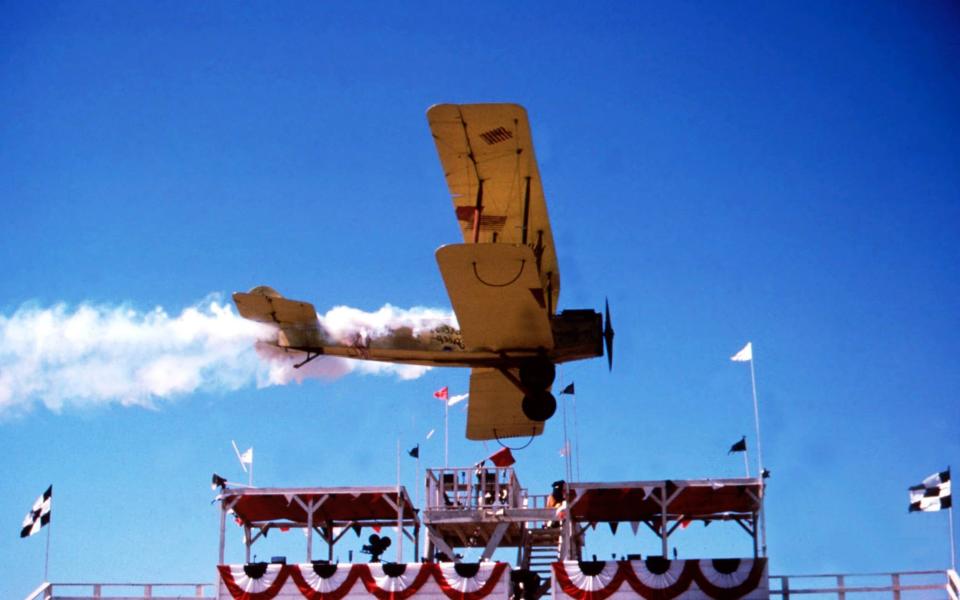
Elsewhere, Disney reprimanded Johnston for allowing Billy Campbell to fly with the aerial performers, and for purchasing stock footage of Adolf Hitler. But Johnston hadn’t bought stock footage at all – the actor playing him just really looked like Hitler. Another extra – playing a band leader in a nightclub scene – caused further trouble by looking too much like superstar clarinetist Artie Shaw. The real Artie Shaw sued. Johnston recalled that Shaw settled for a Disney payoff.
Dubbed “Disney’s Raiders”, The Rocketeer didn’t come cheap. Production had to recreate 1938 Los Angeles, and the flying scenes used combined effects techniques – miniature puppets, ILM animation, and practical stunt work. Stuntmen were suspended from a helicopter going 90 mph at 120ft, and dropped from a plane with a parachute tucked into a fake jet pack.
It was reported that the budget had skyrocketed from $25 million to $40 million. “Once [Disney] started seeing footage, they realised this was a bigger movie than they were anticipating, and they approved overages,” said Johnston, rather amicably, in 1991. Disney attempted to cut back on costs by building only one Nazi zeppelin – a 35ft replica that was set to be blown up for a climatic action sequence. The shot cost a reported $400,000. Unfortunately for the money men, the effect bombed – not in a good way – and had to be re-done. “It went very badly wrong,” said Johnston. “The kind of thing where everyone is just stood there with their mouth open wondering, ‘what do we do now?’”
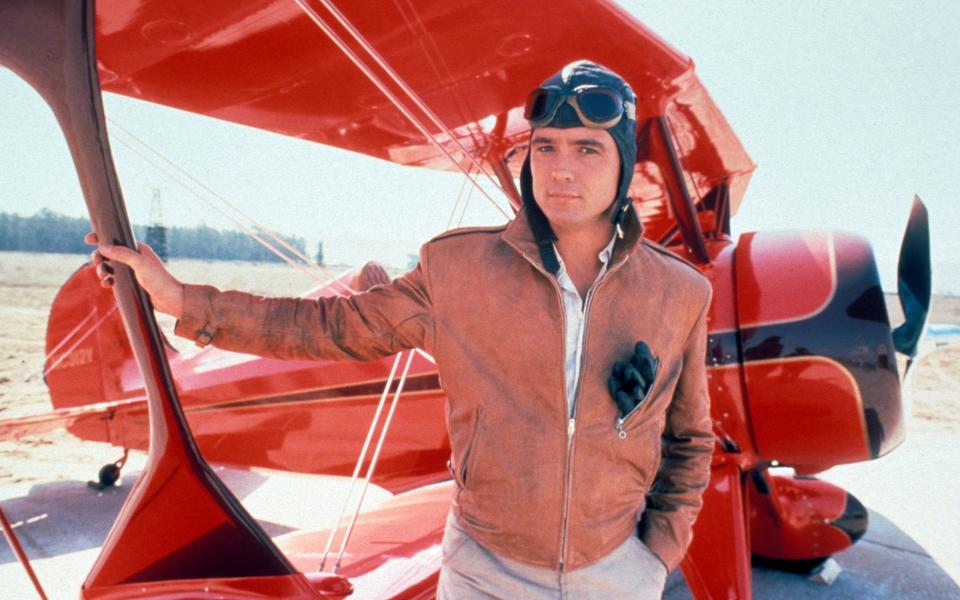
By the time The Rocketeer hit cinemas, comic book movies were on the rise. Tim Burton’s Batman made almost half a billion dollars in 1989; and Disney had released the prosthetic-heavy turkey Dick Tracy in 1990. Bilson and De Meo were also making a TV show of The Flash.
The Rocketeer’s fortunes were unfortunately more Dick Tracy than Batman. It made just $46.7 million in the US. “It was really disappointing,” says Bilson. “The Kevin Costner Robin Hood destroyed us. All of a sudden, no sequel – not even a script, nothing.” The plan was to base it in New York. “We really wanted him flying around the skyscrapers in Manhattan!” says Bilson.
Watched now, The Rocketeer still glimmers with old timey movie magic. It’s all heart and derring-do – a film about Hollywood, playing on Hollywood tropes, but a rip-roaring Hollywood adventure in its own right. Its spirit is best captured in Cliff’s first heroic moment as the Rocketeer – saving a passed-out pilot from an air stunt gone wrong. The sequence was recreated from the comic book pages. Bilson describes it as The Rocketeer at its “purest”.
Talk of a sequel or reboot has circulated in the years since but failed to launch, apart from a 2019 pre-school cartoon. There is nostalgia for the nostalgia of The Rocketeer though. “The Dave Stevens estate says that Rocketeer merchandise makes more than when Dave was alive,” says Bilson. “Now, today – the 30th anniversary – is the most successful point in the movie’s history.”

